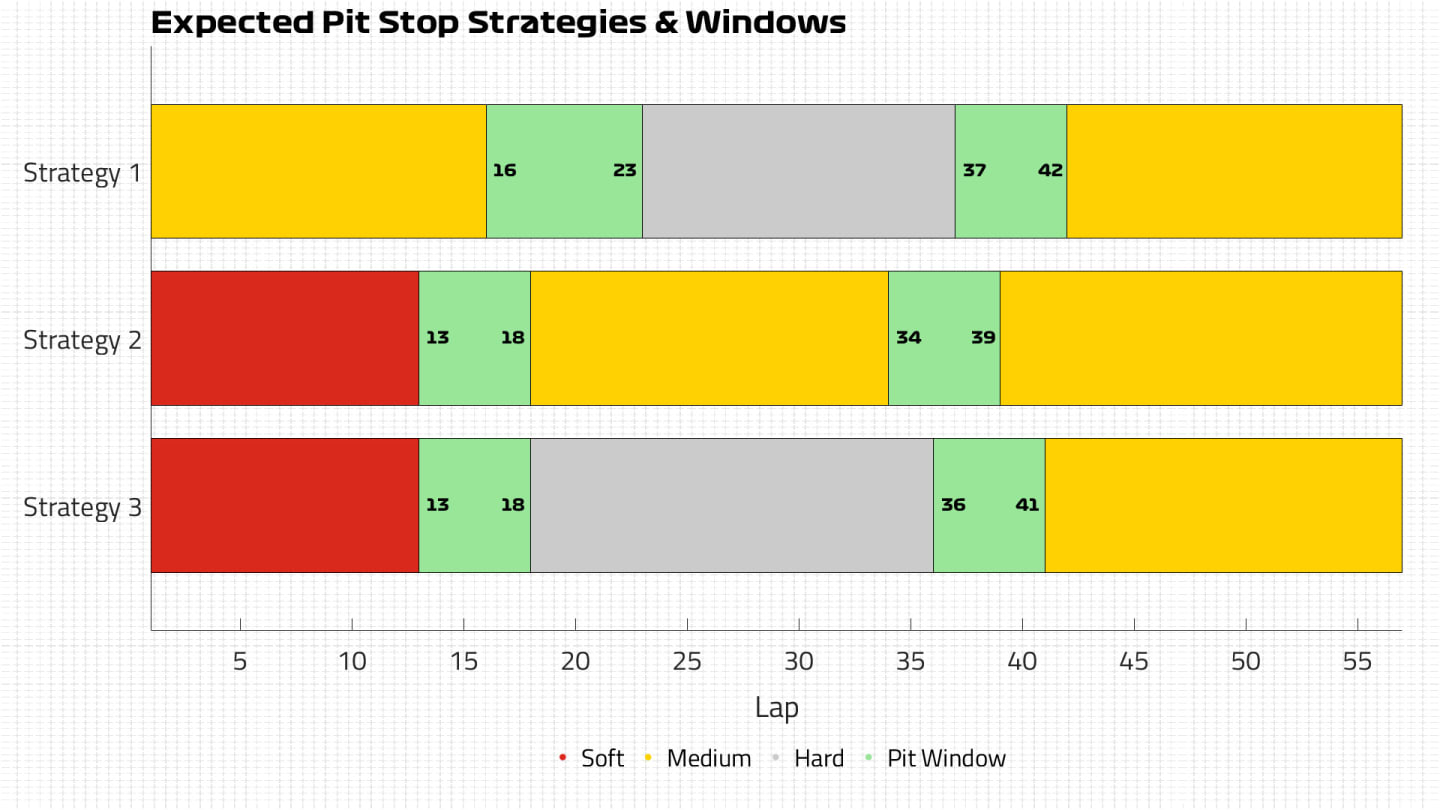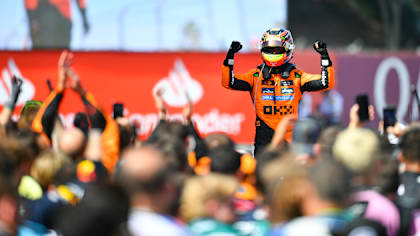
Feature
STRATEGY GUIDE: What are the possible race strategies for the Qatar Grand Prix?

Share

With the teams now having got plenty of data from running at Qatar for the first time ever on Friday and Saturday, there's been something of a shift in how they're looking at strategy from what they were expecting before the weekend began. Let's take a look at the different strategic options that are on the table ahead of today’s race at the Losail International Circuit...
What are the likely strategies for the frontrunners?
Well, who the frontrunners are could well change by the time you're reading this guide, with Max Verstappen (second), Valtteri Bottas (third) and Carlos Sainz (seventh) all facing investigations for failing to respect yellow flags during qualifying.
But working on the assumption that all three start where they qualified, it’s the top three who are all starting on medium tyres but still look set for a two-stop race. Pirelli brought the hardest three compounds in their range to Qatar, but Friday showed higher than expected levels of wear, which suggested there would be too much management required to make a one-stop work as expected.
In a slightly strange scenario, none of the drivers on the grid have two sets of hard tyres available, so the numbers say the quickest strategy that the top three will be looking at will see a switch to the hard tyre anytime from lap 16, and then returning to the mediums when there are 20 laps (or fewer) to go.
The soft could be used for the final stint if required, but would then likely need the middle stint to be extended until around lap 42, leaving a 15-lap run to the flag.
Sainz is the only other driver in the top ten guaranteed to start on the medium compound, and by doing so all four drivers will have the chance to evaluate a one-stop strategy if they can go beyond lap 25 on their first set of mediums before switching to hards.

How about the rest of the top 10?
Everyone else in the top ten will start on soft tyres, but that isn’t necessarily seen as a disadvantage as some teams opted for that compound strategically. Pierre Gasly for example looked capable of reaching Q3 on the mediums and ensuring he started on them, but AlphaTauri decided there was greater importance to maximise the start but being on softs, potentially gaining positions on a track that is expected to be very tough in terms of overtaking.
And with the two-stop looking the most likely option for even those on mediums, the soft isn’t a bad tyre to be on. Gasly in fourth has the ability to run a two-stop that features the second two stints on medium tyres, with a first stint of between 13 and 18 laps followed by two equal stints of around 20 laps to the end of the race.
READ MORE: Hamilton blitzes to crushing Qatar Grand Prix pole under the Losail lights
Gasly could also use the hards for the middle stint if he wishes, mirroring the strategy of the front-runners somewhat and running for in the region of 25 laps before switching to mediums, although the hard is less likely to offer a strong undercut opportunity if close behind another car.
Lando Norris is the only other driver in the top ten with the same options that Gasly has available to him, but as for Fernando Alonso, Yuki Tsunoda, Esteban Ocon and Sebastian Vettel, there is only one set of mediums remaining and so they will have to either run soft-hard-medium or soft-medium-soft. That said, two stints on the soft will require some serious tyre management.

What are the options for the bottom half of the field?
There are some potentially very fast runners in the bottom half of the field given the fact that Sergio Perez starts from 11th and both Daniel Ricciardo and Charles Leclerc also failed to reach Q3, so have a free tyre choice to try and make progress.
All three have the option to use almost any tyres in any combination, but starting on the hard might be a gamble that somebody in the bottom half of the field is willing to take. With the temperature at its highest at the start of the race (although still far below the levels seen in the afternoon sunshine), then it will be easier to switch the hards on, but the opening laps will be a challenge compared to other compounds.
Beyond that, though, running long would likely result in clear air, and the potential to evaluate a one-stop if they can go to lap 30-35 before switching to mediums. If the first stop needed to come earlier, then hard-medium-medium would be possible for everyone except Lance Stroll and the Williams pair, who all have just one set of mediums available to them.
Starting on the hard will also mean having a better chance of pulling off an undercut by being able to run as long as anyone else and switching to softer compounds that will provide an advantage of nearly a second per lap for the soft, or an extra 0.6s per lap for the medium compared to the hard.

Even outside the top ten we could see drivers opting to start on the softs, however, in order to try and gain ground early on and then switch to hards anytime from lap 13 to 18. If the harder compound lasts long enough then a return to softs could also be on the cards, if not the mediums with 20/25 laps remaining.
The caveat to all of the above strategies is the fact they are based on FP2's running – the only representative session that took part at a similar time to qualifying and the race – and since then the track grip levels have increased significantly. Pirelli estimated a jump of nearly 30% in track grip from Thursday to Friday, and so it could be that teams find their tyres lasting better than expected with better grip as the race unfolds.
HIGHLIGHTS: Catch up on all the action from qualifying in Qatar
Wait, but what’s the weather doing?
You probably won’t be surprised to know that the teams are not particularly worried about the weather on the first visit to Qatar, with the forecast for a hot and dry day, with temperatures reaching 27C even after the sun has gone down.
At those temperatures it should remain relatively easy to switch on the tyres throughout, while there is also officially a 0% chance of rain during the race which means the teams will be most focused on the impact of wind in the sense it can destabilise the car on track, but also blow sand onto the surface that makes trying an overtake difficult if you go off-line.

YOU MIGHT ALSO LIKE
Feature FACTS AND STATS: McLaren’s first Spanish 1-2 for a quarter of a century

Video WATCH: See how Piastri beat McLaren team mate Norris to pole with our ‘Ghost Car’ feature
Report Piastri leads McLaren 1-2 from Norris in Spanish GP amid late-race drama for Verstappen and Russell
Feature 6 Winners and 5 Losers from Spain – Who bossed it in Barcelona?



